Metal roofs last between 40-100 years, with the low end being steel at 40-50 years and on the high end being copper which is 80-100 years lifespan.
Table of contents
Different Types of Metal Roofing Materials and Their Lifespan
Metal roofing comes in a diverse range of materials, each offering its unique blend of benefits and aesthetics. From the rustic allure of copper to the modern appeal of galvanized steel, there’s a metal roofing material tailored to every home’s needs and stylistic desires. Dive in as we explore the different types, ensuring you make an informed choice for your roofing investment.
Galvalume Steel Lifespan
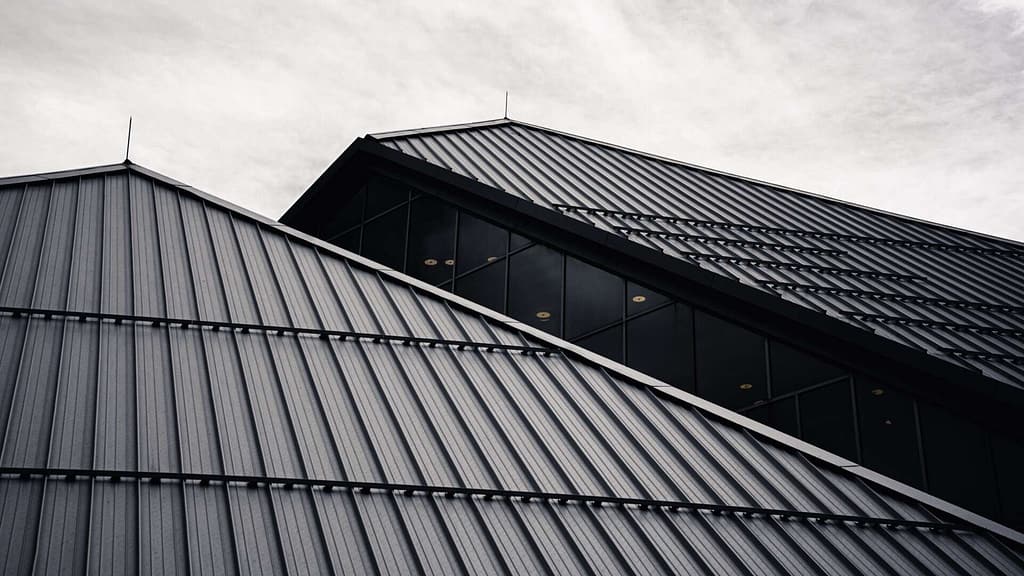
Introduced in the 1970s by Bethlehem Steel Construction Company, Galvalume Steel’s durability can be traced back to its unique composition. Coated with a mixture of aluminum, zinc, and silicon, this roofing material offers unparalleled protection against corrosion.
The combination of aluminum and zinc not only prevents rusting but also reflects a significant portion of the sun’s heat. This reflection helps in keeping buildings cooler during hot seasons, indirectly affecting the roof’s lifespan by reducing wear and tear from temperature-related stress.
Another factor contributing to its longevity is its lightweight nature, which ensures minimal strain on a building’s supporting structure. Though it’s crucial to prevent its contact with materials like copper to avoid galvanic corrosion, its compatibility with a wide range of construction materials speaks volumes about its adaptability.
While its upfront cost might be slightly higher than some basic non-metal roofing options, the long-term benefits of Galvalume Steel, which can exceed 40 years with proper maintenance, make it an economical choice.
Galvanized Steel Lifespan
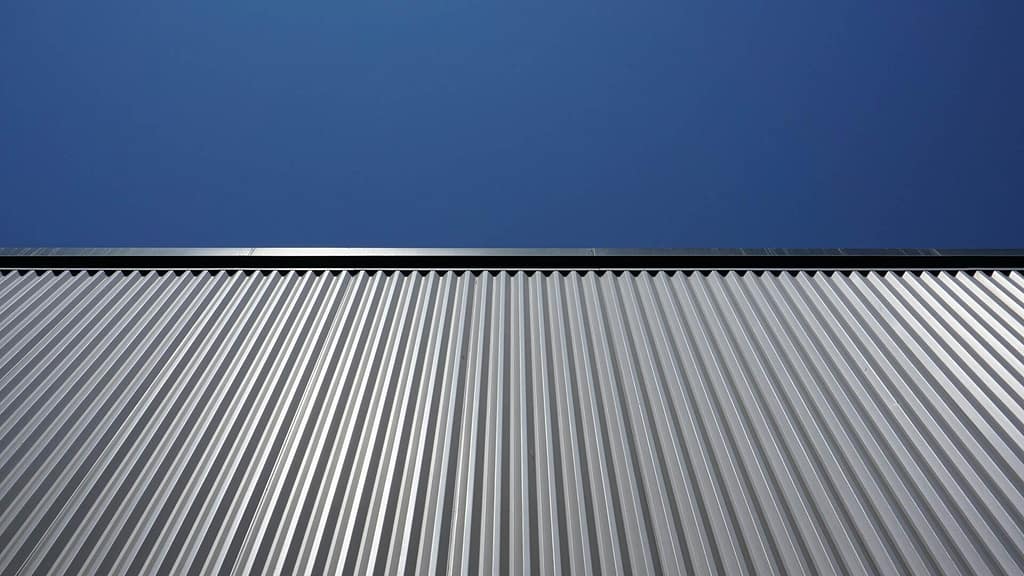
Galvanized steel is a durable roofing option thanks to its zinc coating which prevents rust. This makes it great for various weather conditions, from strong winds to heavy rain.
It’s more affordable than high-end metals like copper and offers a balance of quality and cost. With its strength and low maintenance, it’s a smart long-term investment.
You can also paint galvanized steel, which not only improves its appearance but can extend its life by adding extra protection from the weather.
Aluminum Roof Lifespan
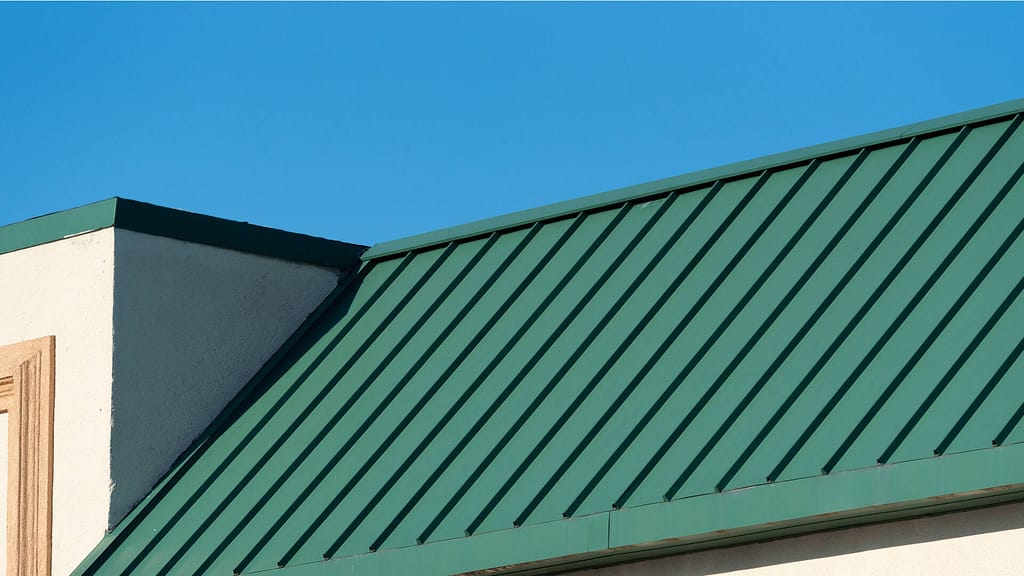
Aluminum is naturally resistant to corrosion, thanks to its oxide layer, making it great for areas with high humidity where many metals degrade quickly. Its light weight eases installation and reduces strain on building supports, leading to longer roof lifespans. Most aluminum roofs last 40 to 60 years, with some even exceeding 70 years. However, it’s softer than metals like steel and can dent more easily, but using a thicker aluminum can help reduce this issue.
Stainless Steel Roof Lifespan

In the context of exploring the longevity of metal roofs, stainless steel often boasts a lifespan of 40 to 70 years. This remarkable durability stems from its composition—an iron alloy with a minimum of 10.5% chromium—which forms a self-repairing oxide layer on the surface.
Beyond its resistance to the elements, stainless steel roofing offers a blend of aesthetics and practicality. It is available in a range of styles and finishes—from matte to polished—and can seamlessly complement various architectural designs. Its reflectivity is another key advantage, as stainless steel roofing helps to deflect sunlight, thereby reducing heat absorption and potentially lowering energy costs during hot summer months.
Moreover, stainless steel is an eco-friendly option; it is recyclable and contributes to sustainable building practices with its long lifespan and minimal maintenance needs. While it excels in fire safety due to its non-combustible nature, there are important considerations for potential buyers.
One of the most significant is cost; stainless steel roofing, while long-lasting and low-maintenance, tends to have a higher upfront cost compared to other metal roofing options, such as galvanized steel. Additionally, in regions with stark temperature variations, proper installation is crucial as stainless steel roofs may experience more thermal movement compared to other metals.
Tin (Terne) Roof Lifespan

Tin roofing has been a staple in construction, with its use tracing back centuries. Originally, Terne roofing was coated with a lead-tin alloy. However, modern innovations have replaced this with a fusion of zinc-tin or other non-toxic metals. This coating acts as a shield against corrosion, which is one of the primary factors influencing a roof’s longevity.
With appropriate care, which is as simple as regular inspections and occasional clean-ups, a Tin roof can last between 50 to 75 years. This impressive lifespan, combined with its resistance to temperature-induced warping thanks to its low coefficient of thermal expansion, makes it a top contender in the realm of long-lasting metal roofing.
Zinc Roof Lifespan
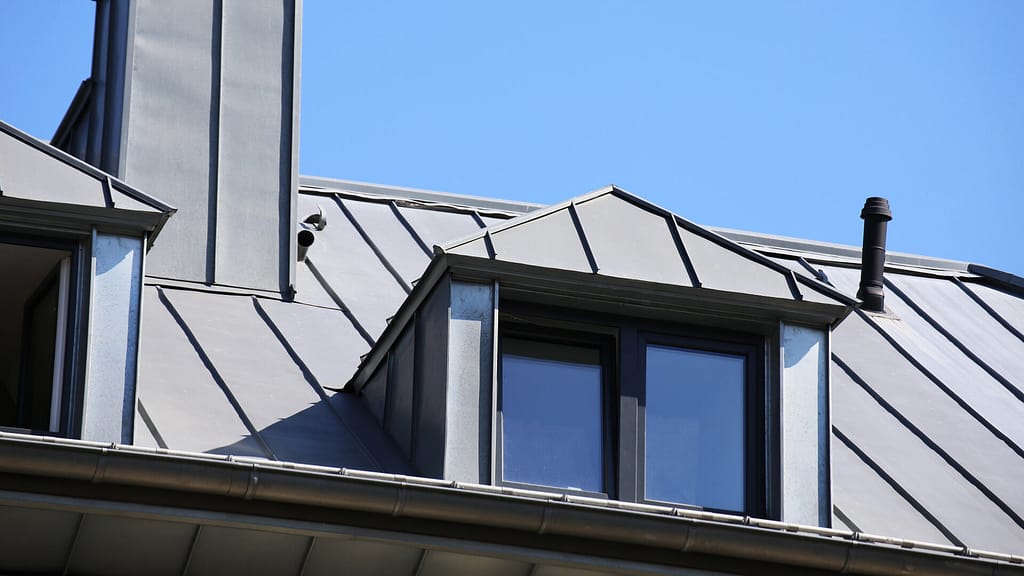
As a premium choice for both residential and commercial applications, zinc roofs are renowned for their exceptional durability, often lasting between 80 to 100 years with proper maintenance. In some cases, and under optimal conditions, they have been known to last up to 150 years.
One of the secrets behind this impressive lifespan is zinc’s natural self-healing property. When exposed to moisture and carbon dioxide in the atmosphere, zinc forms a protective layer known as zinc hydroxyl carbonate. This layer not only wards off corrosion but also has the ability to self-repair, ensuring that incidental scratches or damages are naturally mended, thus maintaining the roof’s integrity over time. This unique characteristic significantly contributes to zinc’s minimal maintenance requirements, allowing homeowners to enjoy a long-lasting, low-maintenance roof.
Furthermore, zinc’s natural resistance to various elements, including corrosion, makes it an ideal choice for a wide range of environments, from coastal regions with salty air to areas with high humidity or pollution. Despite being a lightweight material, zinc is robust, and its ability to withstand diverse environmental conditions without compromising its integrity is a key factor in its longevity.
Copper Roof Lifespan

A well-installed and properly maintained copper roof can impressively serve a building for over a century. For example, Historic Christ Church in Philadelphia (the earliest known church with a copper roof in the United States) traces back its origin to 1727. This century-long durability is a combination of factors. First, as copper ages, it undergoes a natural oxidation process known as patina. This patina isn’t just a beautiful, evolving aesthetic but also a protective layer.
Copper’s inherent corrosion resistance makes it ideal for various challenging environments, from coastal areas with salty air to locales with frequent rainfall or high pollution levels. Additionally, copper roofs, with their lightweight nature, place less stress on a building’s structural integrity, indirectly promoting longevity by ensuring a stable foundation. Because of its robust durability, copper has been the top choice for roofing on historic buildings and places of worship.
However, if you’re residing in the city of Palo Alto, California, copper might not be an available option for you. Due to environmental concerns on copper roofing, the city introduced an ordinance in 2002. This prohibited the use of copper for roofing and related materials in new buildings, with exceptions only for historic structures (Source).
Why Do Copper Roofs Last Long?
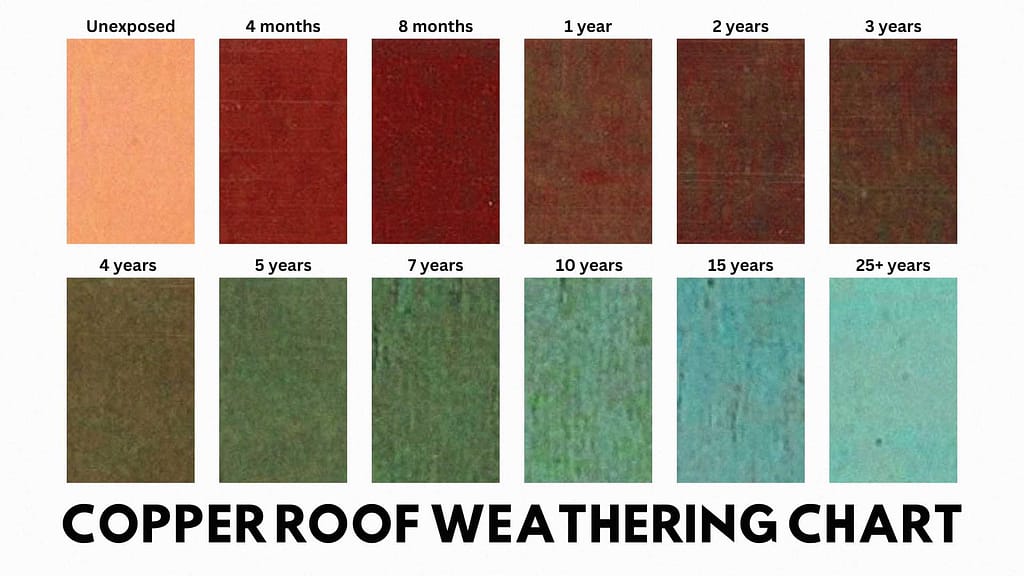
Copper roofs are renowned for their durability and the natural beauty they acquire over time. The secret behind this longevity lies in the patina aging process. So, what sets copper apart and how does this process ensure it remains intact for centuries?
Copper Roof – The Chameleon
While metals like iron rust and deteriorate under wet and airy conditions, copper stands out. Instead of corroding, copper undergoes a fascinating chemical change. Rather than breaking down, it self-patinates, covering itself with a protective layer. This change makes copper go from its bright penny-like color to shades of brown and black, then finally to green. This color evolution signifies the buildup of an oxide-sulfate patina or coating.
The patina’s progression and hue on copper roofs are influenced by several factors. In clean, dry places, copper doesn’t develop patina easily. But in areas with more natural contaminants like sulfur and chloride, the patina forms faster. For instance, the dry climate of Las Vegas, Nevada slows down the patination process, while the humid coastal conditions in areas like Miami promote rapid patina development.
Metal Roof Materials Average Lifespan
| Material | Average Lifespan |
| Galvalume Steel | 40 – 50 years |
| Galvanized Steel | 40 – 50 years |
| Aluminum | 40 – 60 years |
| Stainless Steel | 40 – 70 years |
| Tin (Terne) | 50 – 75 years |
| Zinc | 80 – 100 years |
| Copper | 80 – 100+ years |
Choosing the right metal roof material is not just about balancing cost and longevity. It’s also about considering your future plans. If you’re staying short-term, a high-end roof might not be the best choice. However, if you plan to live in your house for decades, a durable roof could save you money over time.
We created a powerful metal roof calculator to determine the exact cost for a metal roof on your home. However, we have also provided nation averages for each material type and what you can expect to pay. See our metal roof material types and their respective prices.
Some materials might be cheaper but won’t last as long, while others cost more but last longer with less maintenance. A quality roof can also increase your home’s value, especially if you’re considering selling in the future. It’s all about weighing the initial cost, the roof’s lifespan, and your future plans to make a smart decision.
What Factors Reduce the Lifespan of a Metal Roof?
Metal roofs are renowned for their durability and long lifespan, but like any material, they’re not immune to external factors that can accelerate wear and reduce their service years. Here are some key factors that can negatively impact the longevity of a metal roof:
Corrosive Environment
Metal roofs in coastal areas or places with high industrial pollution may face accelerated corrosion due to salt spray or harsh chemicals in the air.
Mechanical Damage
Hailstorms, falling tree branches, or other impacts can cause dents or punctures in the metal. Over time, these damage points can become weak spots prone to leaks or further deterioration.
Thermal Movement
All materials expand and contract with temperature changes. If a metal roof doesn’t have appropriate allowances for thermal movement, it can suffer from warping, seam failures, or fastener issues.
Chemical Exposure
Certain chemicals, if frequently exposed to the metal, can lead to rapid corrosion. This includes some cleaners or solvents, so always ensure you’re using metal-friendly products.
Inadequate Ventilation
Poor attic ventilation can cause a buildup of heat and moisture, leading to condensation beneath the metal surface. Over time, this can corrode the underside of the roof.
Conclusion
Whether you’re looking for an eco-friendly option like stainless steel or the time-tested endurance of copper, metal roofs offer unmatched longevity compared to many traditional roofing materials. Though initial costs can be high for some premium metals, the potential of a century-long service life offers undeniable value. With regular care and mindful considerations to external wear factors, a metal roof can serve as a crown to your home for generations.
Ultimately, your decision should not only hinge on cost or aesthetics alone but on a comprehensive evaluation of lifespan, maintenance, potential resale value, and your long-term aspirations for your property.
Fact Checked By Joseph Castro – 8/17/23
